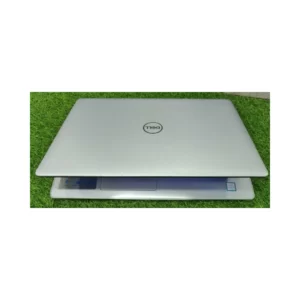Buying Second Hand Laptops: A Complete Guide
Introduction
Buying a second-hand laptop can be a great way to save money while still getting a reliable and functional device. However, it’s important to approach the process with caution and make an informed decision. In this comprehensive guide, we will walk you through the essential steps to consider when buying a second-hand laptop, including assessing your needs, researching, inspecting the laptop, verifying specifications, and ensuring a safe transaction.
Step 1: Assess Your Needs
Before you begin searching for a second-hand laptop, it’s important to assess your needs and determine what you require from the device. Consider factors such as intended use (e.g., gaming, work, school), performance requirements, desired specifications, and budget. This will help you narrow down your options and make a more focused decision.
Step 2: Do Your Research
Thorough research is key when buying a second-hand laptop. Browse reputable websites, online marketplaces, and forums to gather information about reliable sellers, popular laptop models, and market prices. Read reviews and check buyer feedback to gauge the reputation of sellers and the quality of the laptops they offer.
Step 3: Inspect the Laptop
When you find a potential laptop, it’s crucial to inspect it thoroughly before making a purchase. If possible, meet the seller in person to examine the laptop physically. Check for any physical damages, such as scratches, dents, or cracks. Inspect the keyboard, touchpad, and ports to ensure they are in good working condition. Turn on the laptop and test the display, speakers, and webcam. Additionally, check the battery health and the condition of the charger.
Step 4: Verify Specifications
Verify that the specifications of the laptop match the seller’s description. Check the processor, RAM, storage capacity, and operating system. Look for the laptop’s model number and research its specifications online to ensure accuracy. If possible, ask the seller for the original purchase receipt or documentation to confirm the laptop’s authenticity and specifications.
Step 5: Check the Laptop’s History
Inquire about the laptop’s history, including how long it has been in use, any repairs or upgrades performed, and the reason for selling. This information can provide insights into the laptop’s condition and whether it has undergone any major issues or modifications.
Step 6: Negotiate and Finalize the Purchase
If you are satisfied with the laptop’s condition and specifications, it’s time to negotiate the price with the seller. Use your research and knowledge of the market to negotiate a fair price based on the laptop’s age, condition, and specifications. Once both parties agree on the price, finalize the purchase. If possible, draft a simple agreement or receipt to document the transaction.
Step 7: Ensure a Safe Transaction
To ensure a safe transaction, consider the following precautions:
- Meet the seller in a public place or a safe environment.
- Insist on cash or secure payment methods such as PayPal or bank transfers.
- If buying online, use trusted platforms with buyer protection.
- Verify the seller’s identity and contact information.
- Avoid sharing personal or financial information beyond what is necessary for the transaction.
Step 8: Test and Set Up the Laptop
Once you have completed the purchase, it’s important to test the laptop thoroughly. Connect to the internet, update the operating system, and run a virus scan to ensure it is free from malware. Install necessary software and drivers, and test all the features and functionalities of the laptop to ensure everything is working as expected.
Step 9: Consider Warranty and Return Policies
Before finalizing the purchase, inquire about any warranty or return policies offered by the seller. While second-hand laptops may not always come with a warranty, some sellers may provide a limited period of coverage or a return option in case of unforeseen issues. Clarify these details and understand the terms and conditions before completing the transaction.
Conclusion
Buying a second-hand laptop requires careful consideration and research. By assessing your needs, researching thoroughly, inspecting the laptop, verifying specifications, and ensuring a safe transaction, you can make an informed decision and find a reliable device that meets your requirements. Remember to be vigilant, ask questions, and trust your instincts throughout the process. With the right approach, buying a second-hand laptop can be a cost-effective and rewarding experience.


